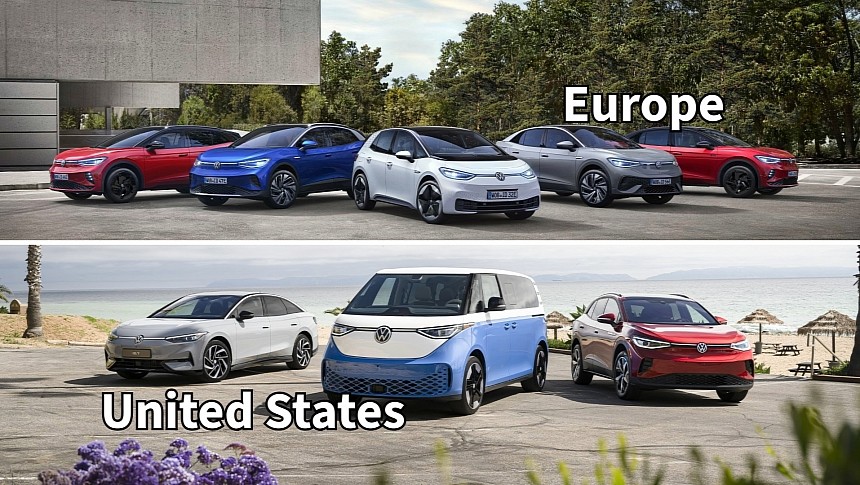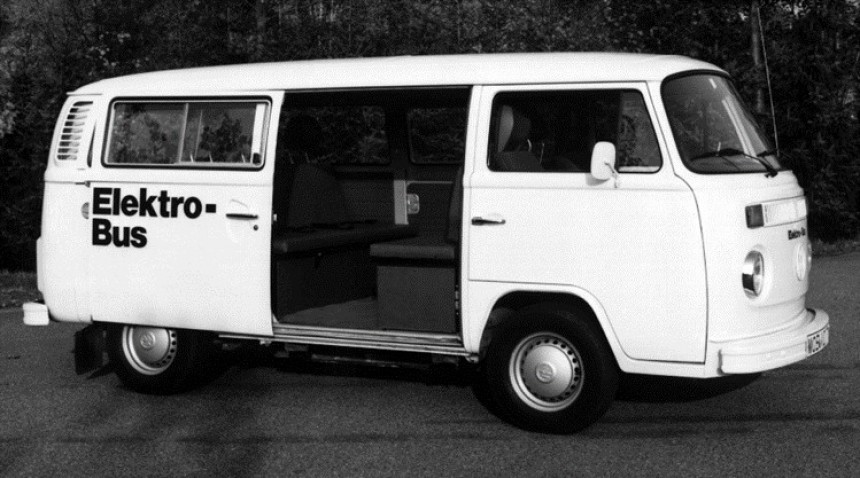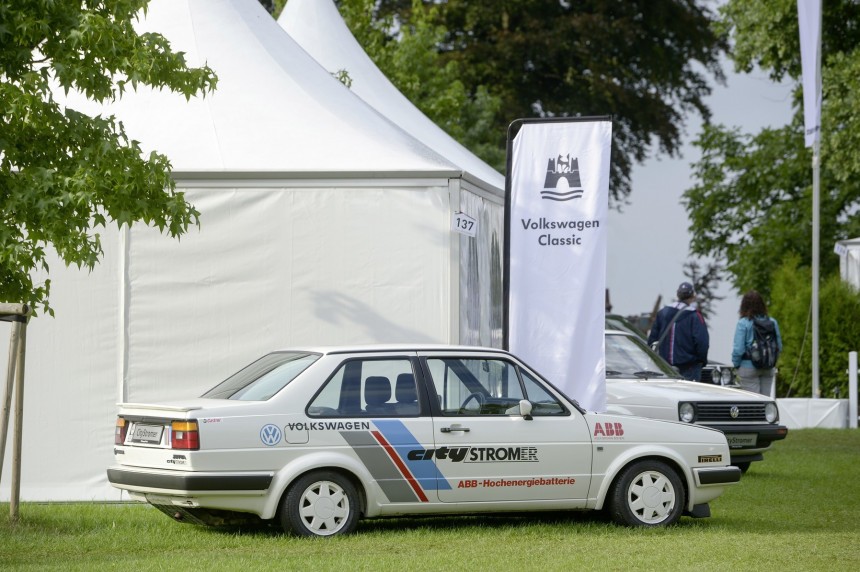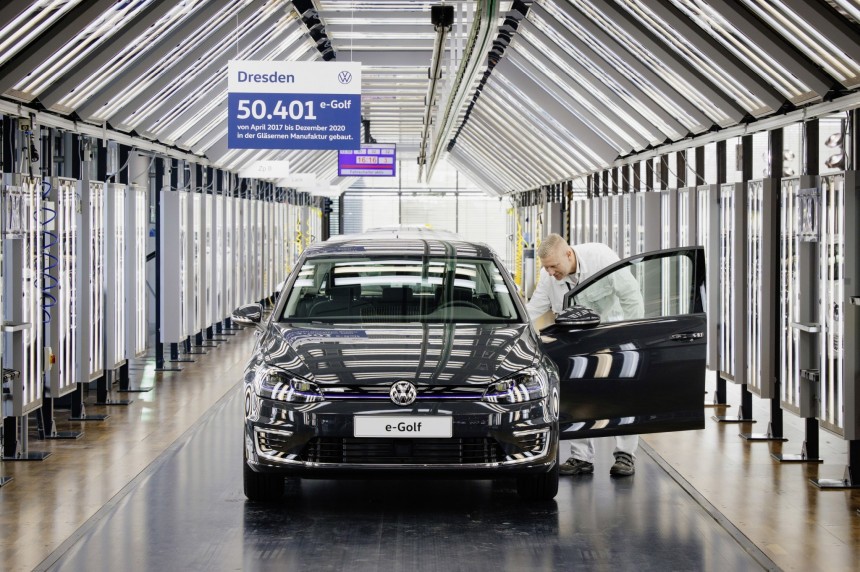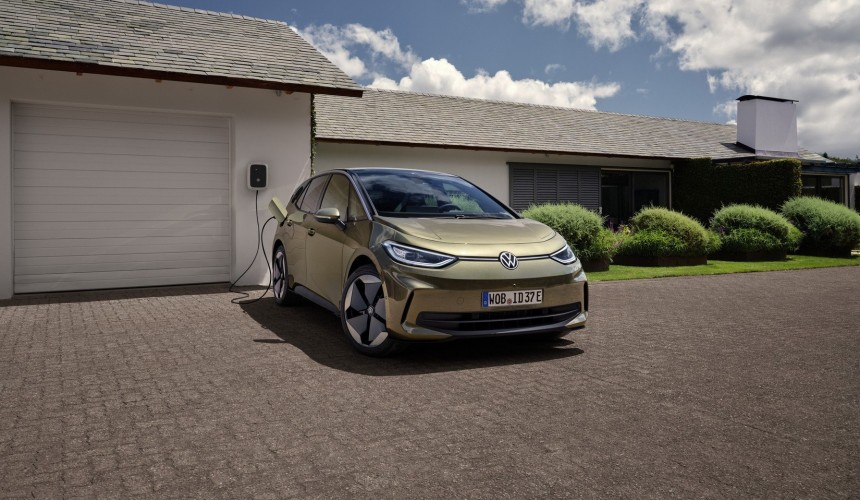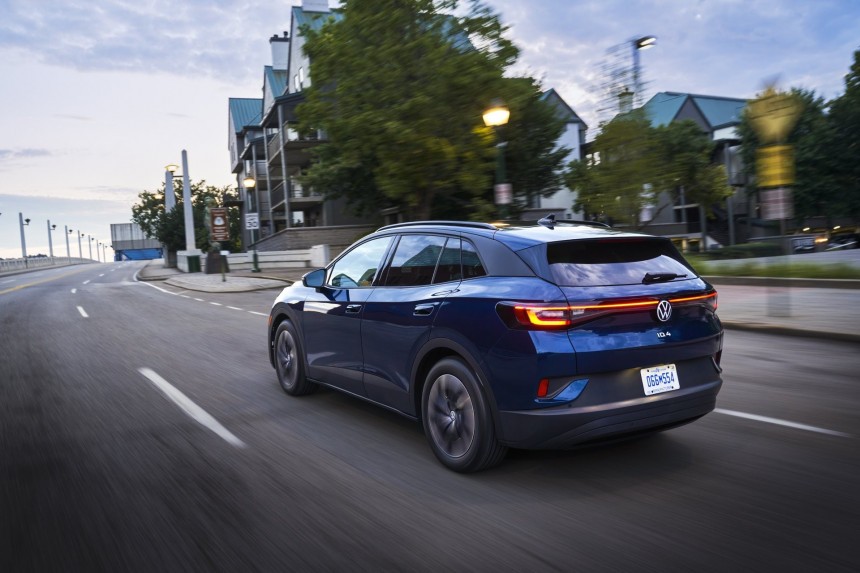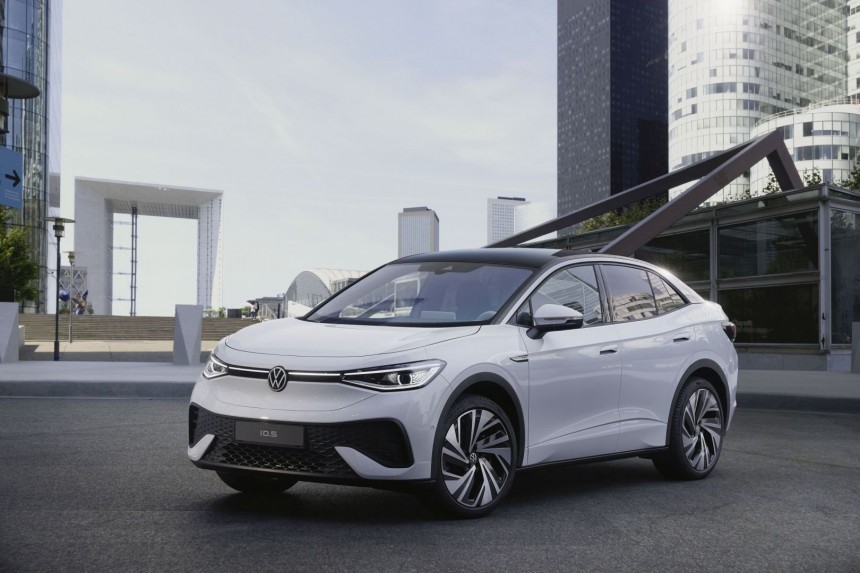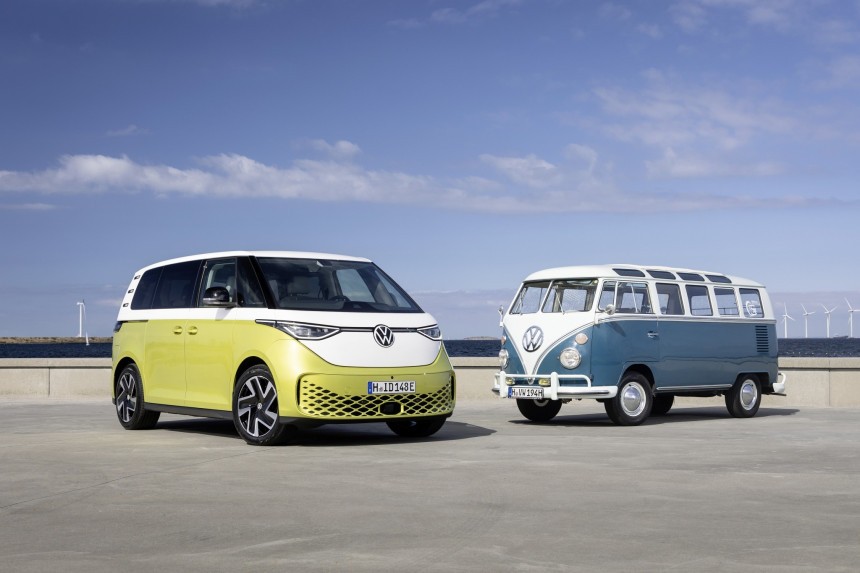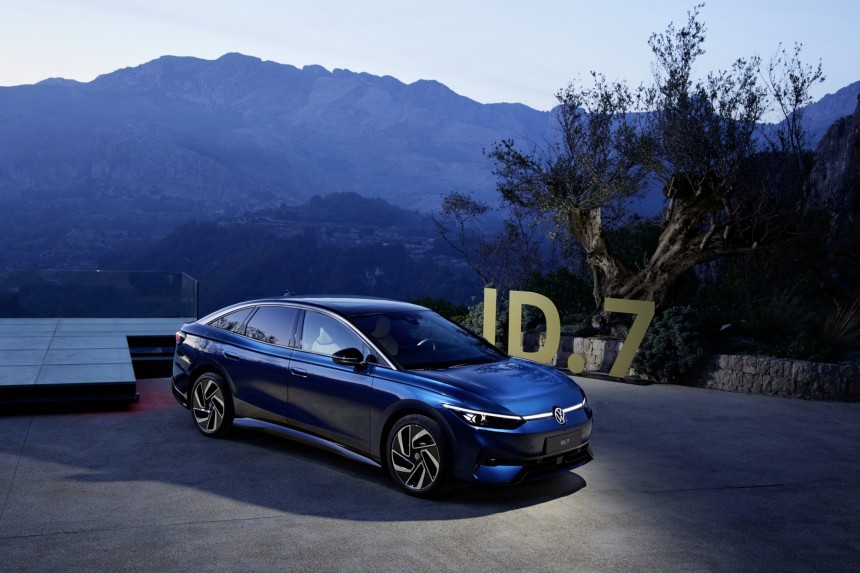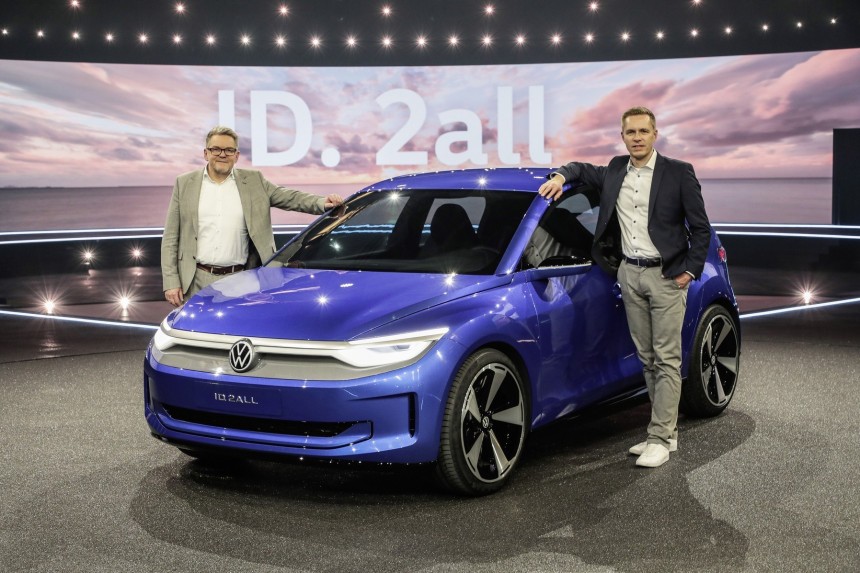Volkswagen started experimenting with electric vehicles in the 1970s when it installed an electric motor on the T2 Camper, making it the first Elektro-Bus. Today, the German brand has one of the most comprehensive EV lineups, and it's the most credible challenger to Tesla's domination among traditional carmakers.
Electric vehicles have entered the mainstream in the past two years, with more customers willing to consider switching to an EV than ever before. Roughly 10% of all cars sold in the US were powered by a battery in Q3 2023, a notable increase versus the 7% in the previous quarter. This shows that EV adoption is accelerating, propelled by Tesla and new contenders flooding the market with compelling electric cars.
Volkswagen is often overlooked when it comes to electric vehicles, especially as the German brand seems to be overshadowed by Tesla on every metric. But make no mistake, the German carmaker is doing many things right and has the might of the Volkswagen Group behind it with its engineering and R&D prowess. The top-management changes may have slowed EV development, but Volkswagen is still committed to going all-in with electric vehicles.
Volkswagen was no exception, as soaring oil prices and fuel shortages boosted efforts to explore alternative powertrains. A team at the Centre for Future Research in Wolfsburg, Germany, has been tasked with developing an electric powertrain. The result was Volkswagen's first all-electric concept vehicle, the Elektro-Bus.
The battery pack was located on the vehicle floor, like in all modern EVs. Unlike them, though, the battery pack consisted of lead-acid batteries, resulting in a heavy load of 1,847 lb. (840 kg). That was heavier than a Volkswagen Beetle. Volkswagen engineers chose the T2 Camper as the base vehicle since that was the only model that could carry all that weight.
The Elektro-Bus had a very limited range of 25 miles (40 km), and the batteries took 10 hours to charge fully from a household outlet. The top speed was acceptable, at 43.5 mph (70 kph), more than enough for city driving. The engineering team later improved the design with a removable battery, which took minutes to replace. This concept is similar to the one Mercedes-Benz implemented on its first EV, the LE 306.
The Volkswagen Elektro-Bus had over 70 versions between 1973 and 1975, with the first units being sold to the public in 1977. Only 20 were sold, despite the rather clever slogan, "Zero liters per 100 kilometers." The same engineering team also electrified the first-generation Golf in 1976, an effort that culminated in 1981 with the launch of the Golf CitySTROMer, VW's first EV that people could use.
Volkswagen wasn't shy about experimenting with new battery chemistries, as the battery technology at the time had essential limitations. It launched the Jetta CitySTROMer in 1988 with a sodium-sulfur battery. The new chemistry allowed the batteries to be much lighter and thus more energy-dense. The Jetta CitySTROMer had 75 miles (120 km) of range and a top speed of 65 mph (105 kph), both considered extraordinary for their time.
Volkswagen took things up a notch with the launch of the Golf II CitySTROMer in 1993. This was the most successful EV that Volkswagen produced until then, with 120 units sold in Germany. It had 16 gel batteries that offered a 55-mile (90-km) range. The improved batteries allowed fast charging to 80% in 1.5 hours on a regular house outlet. This was also the first model to recuperate energy during braking, a key feature of all modern EVs.
Something good came out of this, as Volkswagen prepared another electric Golf. The Golf blue-e-motion concept was unveiled in 2011 as an electric version of the Golf Mk6. The e-Golf series model arrived in 2014 alongside the Golf Mk7, and it was the first electric vehicle from Volkswagen that could be bought from a showroom, like all other cars. With a reasonable price, it became quite popular, including in the US. The EPA estimate of 83 miles wasn't great but was reasonable considering the technology at the time and the 24 kWh battery.
As batteries improved, later models offered better EPA ratings. After the 2017 refresh, the Volkswagen e-Golf got a 35.8-kWh battery, which allowed it to offer up to 144 miles of range. The Volkswagen e-Golf was so successful that it was produced long after the other powertrain versions were phased out in 2019. Production ended in December 2020 to make way for the ID.3 at the Volkswagen Transparent Factory in Dresden. Chinese production continued well into 2021 when the local factory was retooled to add an MEB production line.
At about the same time as the e-Golf, Volkswagen also launched the e-Up, an electric supermini that was, briefly, the most affordable EV in Europe. That was until its identical twin with a Skoda badge arrived in 2019 alongside the refreshed model. The latter featured a 32-kWh battery, enough for 165 miles (270 km) of range.
The ID.3, the first EV launched on the MEB platform, was marred with software problems that delayed deliveries for a long time. From spring 2020, the ID.3 cars were produced and stored in parking lots for over six months until software problems were solved. Even so, the first deliveries in September 2020 had cloud-connected features disabled. The software was deemed production-ready toward the end of 2020, but software problems have affected all MEB models ever since.
Volkswagen touted the ID.3 as the third era of car development, after the Beetle and the Golf, but failed miserably to deliver on these bold claims. Not only software was to blame, but also hardware. The ID.3 has been harshly criticized for lackluster build quality, with hard plastics, uneven panel gaps, and poor-quality seats among the most obvious. Volkswagen also saved where it shouldn't have by not offering illuminated buttons or not offering them at all.
Despite these issues, the ID.3 was appreciated for its good ride quality and reasonable performance. The ID.3 was offered a mild refresh in March, aimed at correcting some of the issues and making it more attractive. Available with a 58-kWh or 77-kWh battery (usable capacity), the ID.3 has a top range of 340 miles (550 km) and can be charged at up to 170 kW. It is not sold in the US, but its bigger brother, ID.4, is.
The ID.4 is available in rear-wheel-drive and all-wheel-drive variants, with 210 horsepower and 295 horsepower, respectively. Prices start at $38,995, making it one of the most affordable electric crossovers on the market. The deal is even sweeter thanks to the IRA tax credit. Because the ID.4 is built in the US, it can benefit from the full $7,500 IRA tax credit, at least until December 31.
Volkswagen ID.4 shares many technical details with the ID.3, including the 58-kWh and 77-kWh battery options. This allows it to travel between 209 and 275 miles on a charge, the latter being achieved when combining the bigger battery with the rear-wheel drive configuration. The ID.4 charges at up to 170 kW, with a 10-80 percent charging time between 30 and 36 minutes, depending on the battery.
The Volkswagen ID.6 is an interesting proposition, considering it's the only three-row SUV built on the MEB platform. To accommodate the third row, the ID.6 has a longer wheelbase. Its main drawback is that it's only available in China, and there are no plans to bring it to the US or Europe. The ID.6 is built by two different Volkswagen joint ventures in China, each with its own distinctive styling. The ID.6 X is assembled in Anting by SAIC-Volkswagen, whereas the ID.6 Crozz comes from the FAW-Volkswagen factory in Foshan.
Two versions are currently in production: the five-seater passenger variant and a cargo van named ID. Buzz Cargo. A long-wheelbase version with seven seats is expected next year. It will be the only variant sold in the US starting in June 2024, one year after it was unveiled during the International Volkswagen Bus Day in Huntington Beach, California.
The ID. Buzz LWB is the longest model built on the MEB platform, measuring 195.3 inches (4.96 meters). It features a larger 85-kWh (usable) battery than the five-seater variant, which only has 77 kWh of usable battery. The technical details are still scarce, so no EPA estimate is available, although word goes that the US-spec ID. Buzz will have around 260 miles of range, which is not bad.
The ID. Buzz LWB has one electric motor on the rear axle, with a maximum power of 282 horsepower. An all-wheel drive variant will also be offered in the US, with two electric motors totaling 335 horsepower. The top speed is 99 mph (160 kph), and the 0-60 time is about 7.7 seconds for the RWD variant. The sportier GTX version will cut this by about 1.5 seconds.
The German carmaker boasts unparalleled efficiency thanks to a new drive unit and state-of-the-art aerodynamics. Volkswagen promised the ID.7 would go as far as 435 miles (700 km) on a charge, although this is based on the less realistic European WLTP cycle. I estimate that the ID.7 could reach 320 miles EPA range, which is still respectable.
The Volkswagen ID.7 sales have already started in Europe, although the US variant has not yet been announced. Don't expect it to be cheap, with the European pricing starting at 56,995 euros (about $60,440). It's still more affordable than the similarly-sized Tesla Model S, but the specifications and performance will not make it a public's favorite.
Volkswagen had plans to launch a completely new EV platform called Scalable Systems Platform (SSP). Initially scheduled to underpin the first EV models in 2026, the SSP will not be here earlier than 2028. The new platform was designed to replace the aging MEB across all of Volkswagen Group's brands and models. Given the current situation, the MEB will remain the main EV architecture for at least another five years. This also means that the Trinity project, a high-end sedan, is delayed indefinitely.
Given the situation, how Volkswagen's future EV models will progress is unclear. In March, Volkswagen introduced the ID. 2all concept and showed off a sportier version as the ID. GTI in September. The concept previews a new electric model the size of the Polo city car but with the styling and space offering of its bigger brother, the Golf.
The future of ID branding is also uncertain, as Volkswagen management has sent contradicting messages. The German carmaker is not willing to let go of its most iconic nameplates, like the Golf and Tiguan. As the market moves towards an all-electric future, an all-electric brand different from Volkswagen would not make much sense. Not to mention that the ID. name has not become very popular.
Volkswagen is often overlooked when it comes to electric vehicles, especially as the German brand seems to be overshadowed by Tesla on every metric. But make no mistake, the German carmaker is doing many things right and has the might of the Volkswagen Group behind it with its engineering and R&D prowess. The top-management changes may have slowed EV development, but Volkswagen is still committed to going all-in with electric vehicles.
Volkswagen's first EV: The Elektro-Bus
Many European carmakers began experimenting with electric vehicles during the oil crisis in the 1970s. This is a trend that we're still seeing today when electric cars have become common. People are more willing to consider switching to an EV when gas prices skyrocket, and that was most visible when the world economy regained speed after the pandemic. We shouldn't be surprised that the first modern electric cars were developed during an oil crisis.Volkswagen was no exception, as soaring oil prices and fuel shortages boosted efforts to explore alternative powertrains. A team at the Centre for Future Research in Wolfsburg, Germany, has been tasked with developing an electric powertrain. The result was Volkswagen's first all-electric concept vehicle, the Elektro-Bus.
The Elektro-Bus had a very limited range of 25 miles (40 km), and the batteries took 10 hours to charge fully from a household outlet. The top speed was acceptable, at 43.5 mph (70 kph), more than enough for city driving. The engineering team later improved the design with a removable battery, which took minutes to replace. This concept is similar to the one Mercedes-Benz implemented on its first EV, the LE 306.
The Volkswagen Elektro-Bus had over 70 versions between 1973 and 1975, with the first units being sold to the public in 1977. Only 20 were sold, despite the rather clever slogan, "Zero liters per 100 kilometers." The same engineering team also electrified the first-generation Golf in 1976, an effort that culminated in 1981 with the launch of the Golf CitySTROMer, VW's first EV that people could use.
Modern era: From the Golf CitySTROMer to the e-Golf
The experience with the first CitySTROMer was refined with the launch of the second generation of the Golf hatchback. The Golf II CitySTROMer, shown in 1985, was the first EV built for series production. The new electric model used gel-electrolyte batteries as the main innovation. Volkswagen made 70 Golf II CitySTROMer units, mainly used for customer service by power utilities.Volkswagen took things up a notch with the launch of the Golf II CitySTROMer in 1993. This was the most successful EV that Volkswagen produced until then, with 120 units sold in Germany. It had 16 gel batteries that offered a 55-mile (90-km) range. The improved batteries allowed fast charging to 80% in 1.5 hours on a regular house outlet. This was also the first model to recuperate energy during braking, a key feature of all modern EVs.
Volkswagen e-Golf and e-Up: The first EVs people could buy in a showroom
As the oil prices dropped, electric vehicles started to look less compelling, so Volkswagen tried its hand at hybrid powertrains for a while. But since the economy runs in circles, another crisis hit in 2009, and with it, fresh efforts were made toward electrification. The lithium-ion battery was the new kid in town, allowing a quantum leap in EV performance.Something good came out of this, as Volkswagen prepared another electric Golf. The Golf blue-e-motion concept was unveiled in 2011 as an electric version of the Golf Mk6. The e-Golf series model arrived in 2014 alongside the Golf Mk7, and it was the first electric vehicle from Volkswagen that could be bought from a showroom, like all other cars. With a reasonable price, it became quite popular, including in the US. The EPA estimate of 83 miles wasn't great but was reasonable considering the technology at the time and the 24 kWh battery.
At about the same time as the e-Golf, Volkswagen also launched the e-Up, an electric supermini that was, briefly, the most affordable EV in Europe. That was until its identical twin with a Skoda badge arrived in 2019 alongside the refreshed model. The latter featured a 32-kWh battery, enough for 165 miles (270 km) of range.
Volkswagen ID.3: The MEB platform and its shortcomings
Volkswagen entered the second decade of the 21st century with big plans, not knowing how screwed up things would become. It started everything from a clean sheet, with a new EV-only brand (ID.), new EV-dedicated architecture (MEB), and plans to flood the market with electric vehicles until there'd be no one else left to compete. Things didn't turn out exactly as planned, as the company's tendency to overengineer things led to complicated products that failed miserably in the beginning.The ID.3, the first EV launched on the MEB platform, was marred with software problems that delayed deliveries for a long time. From spring 2020, the ID.3 cars were produced and stored in parking lots for over six months until software problems were solved. Even so, the first deliveries in September 2020 had cloud-connected features disabled. The software was deemed production-ready toward the end of 2020, but software problems have affected all MEB models ever since.
Despite these issues, the ID.3 was appreciated for its good ride quality and reasonable performance. The ID.3 was offered a mild refresh in March, aimed at correcting some of the issues and making it more attractive. Available with a 58-kWh or 77-kWh battery (usable capacity), the ID.3 has a top range of 340 miles (550 km) and can be charged at up to 170 kW. It is not sold in the US, but its bigger brother, ID.4, is.
Volkswagen ID.4: Made in the USA
The MEB platform is flexible enough to underpin a wide range of models, from compact hatchbacks like the Volkswagen ID.3 to mid-size buses (ID. Buzz) or sedans (ID.7). The ID.4 is the compact crossover of this family and was deemed good enough to be sold in the US. More than that, in August 2022, Volkswagen announced that the electric crossover would be built locally in Chattanooga, Tennessee. The American model features market-specific features to make it more competitive against the Tesla Model Y.Volkswagen ID.4 shares many technical details with the ID.3, including the 58-kWh and 77-kWh battery options. This allows it to travel between 209 and 275 miles on a charge, the latter being achieved when combining the bigger battery with the rear-wheel drive configuration. The ID.4 charges at up to 170 kW, with a 10-80 percent charging time between 30 and 36 minutes, depending on the battery.
Volkswagen ID.5 and ID.6: Exotic brothers
While the ID.4 is the mainstream electric crossover, the ID.5 is its coupe variant. There are no technical differences except those dictated by the slanted roof. These include the lower ceiling, improved aerodynamics, and the smaller cargo volume. The ID.5 is only available in Europe and is roughly identical to the Audi-badged Q4 e-tron Sportback. On the plus side, it has a lower drag coefficient, 0.26 instead of 0.28, and arguably a more attractive silhouette.Volkswagen ID. Buzz: The electric Bus
Volkswagen introduced the ID. Buzz as a concept at the 2017 Detroit Auto Show, with production planned for 2022. The production model has already launched in Europe, but the US customers are still waiting to get it. The Volkswagen ID. Buzz plays the retro card with a cartoonish design that reminds us of the legendary Volkswagen Bus (T1). It's also built on the MEB platform like all current electric models in the Volkswagen lineup, which means it is almost as underpowered as its hippy-era ancestors.Two versions are currently in production: the five-seater passenger variant and a cargo van named ID. Buzz Cargo. A long-wheelbase version with seven seats is expected next year. It will be the only variant sold in the US starting in June 2024, one year after it was unveiled during the International Volkswagen Bus Day in Huntington Beach, California.
The ID. Buzz LWB has one electric motor on the rear axle, with a maximum power of 282 horsepower. An all-wheel drive variant will also be offered in the US, with two electric motors totaling 335 horsepower. The top speed is 99 mph (160 kph), and the 0-60 time is about 7.7 seconds for the RWD variant. The sportier GTX version will cut this by about 1.5 seconds.
Volkswagen ID.7: The electric Passat
The spiritual successor to the Passat, the Volkswagen ID.7 offers a similar layout with an electric powertrain. This is also based on the MEB architecture, and it has more in common with the ID. Buzz LWB than with the ID.4. This means it shares the same battery pack (either 77 kWh or 85 kWh of usable capacity) and the same electric motor, with 282 horsepower sent to the rear wheels. No AWD variant has been announced, although I wouldn't rule out a GTX version similar to the ID. Buzz.The Volkswagen ID.7 sales have already started in Europe, although the US variant has not yet been announced. Don't expect it to be cheap, with the European pricing starting at 56,995 euros (about $60,440). It's still more affordable than the similarly-sized Tesla Model S, but the specifications and performance will not make it a public's favorite.
Volkswagen needs new EV plans, and it needs them quick
The future looks fuzzy for Volkswagen's EV plans, as the development of new EV platforms and models appears to have stalled with the ousting of Herbert Diess in 2022. Volkswagen lost a year trying to figure out what to do next, and it still hasn't got any solid plans. In the meantime, the world has not stood still, and Volkswagen risks launching today's technology in 2030. This is not much different from selling the MEB-based ID.7 in 2024.Given the situation, how Volkswagen's future EV models will progress is unclear. In March, Volkswagen introduced the ID. 2all concept and showed off a sportier version as the ID. GTI in September. The concept previews a new electric model the size of the Polo city car but with the styling and space offering of its bigger brother, the Golf.
The future of ID branding is also uncertain, as Volkswagen management has sent contradicting messages. The German carmaker is not willing to let go of its most iconic nameplates, like the Golf and Tiguan. As the market moves towards an all-electric future, an all-electric brand different from Volkswagen would not make much sense. Not to mention that the ID. name has not become very popular.
